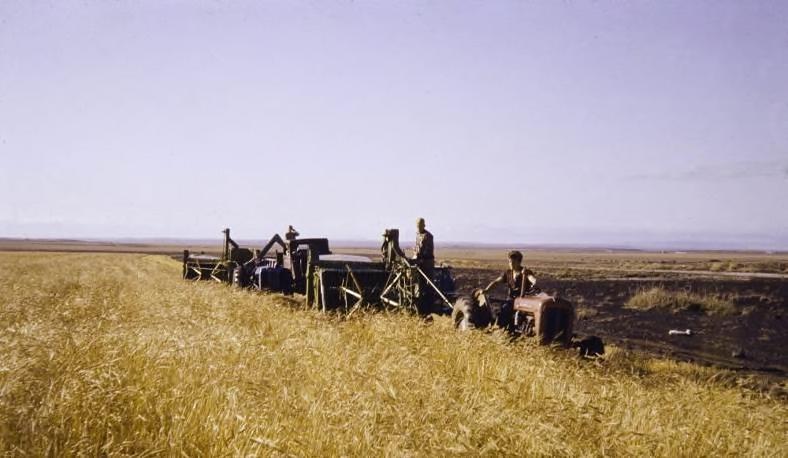
3 minute read
The weather factor
century Norwegian and Danish farmers came to Iceland to cultivate barley and teach farmers how to grow barley. They were not successful. Later in the same century two Icelanders were sent abroad to learn grain farming, also without success, probably due to the very cold climatic conditions in Iceland during most of the 18th century. It was not until Klemenz Kr. Kristjánsson, who headed the Sámsstaðir State Experimental Station in south central Iceland, started to experiment with barley cultivation in the 1920s that grain production slowly attracted interest in Iceland. Klemenz was an agronomist by training and carried out comparative studies of introduced barley varieties as well as studies on fertilizer applications, tilling methods and methods of planting seeds. He thus laid the foundation for grain growing in Iceland in the 20th century. He was not a breeder and did not attempt any cross-breeding. Following his fairly successful experience with barley cultivation, other farmers in south and east Iceland began to grow barley on a small scale in the 1950s. After a small improvement in summer temperatures, especially in 1960, a brief renaissance in grain production started and grew rapidly for a few years only to be stifled quickly again by worsening growing conditions towards the end of that decade with the arrival of a small „ice age“. It put an end to almost all further attempts at small grain production as well as to the budding research and breeding efforts which had been started by the University of Iceland Research Institute in 1961. Towards the end of the decade none of the breeding material survived long enough to produce viable seeds and widespread harvest failures discouraged almost all farmers from further attempts at grain growing. Further research efforts also became pointless. Thus, at the time there was little interest in completing the data analysis and publishing the results of the research as a scientific paper. During the span of the research activities, however, reports on the experimental findings were made available to farmers in lectures, farmers´ publications and newspapers, most of which, plus most of the original research data, still exist. This material forms the basis for this report. Barley cultivation was continued on only two farms, the same ones that did so before the „renaissance“. One of them, the farm Thorvaldseyri in south Iceland, is today arguably the most successful grain growing farm in Iceland.
The climate in Iceland is predominantly influenced by the far north geographic location of the country, touching the Arctic Circle, although the warm Gulf Stream, together with the abundant daylight in the summer, makes the island more inhabitable. The decisive factors for successful grain farming in Iceland are summer temperatures, cloud cover and the length of the growing season. This means the arrival of spring at the end of April or beginning of May and the first incidences of early autumn frosts or stormy and wet weather during harvest in September and October. Available accounts on weather conditions from the time of settlement, together with data from the Icelandic Meteorological Office, indicate clearly that temperatures at the time of settlement and during the following 500 years were significantly higher than those prevailing during the Middle Ages into the 20th century (Sigurður Thórarinsson, 1974). The highest summer temperatures in the 20th century have also varied considerably and the good results in barley cultivation at Sámsstaðir State Experimental Station coincided for example with favourable periods (Figure 3). Better weather in the late 1950s and especially in 1960, together with the fairly successful barley cultivation by a few farmers in east and south Iceland, seems to have been the main stimulus for the surprisingly great interest in grain growing and the willingness to take risks by farmers and others in greatly expanding grain acreage at that time. As one can read in newspaper articles and other published material from this time there were high expectations and even greater hopes for a brighter grain future in Iceland. It is also quite clear that the rapidly decreasing temperatures after 1960 explain why this renaissance was so short








